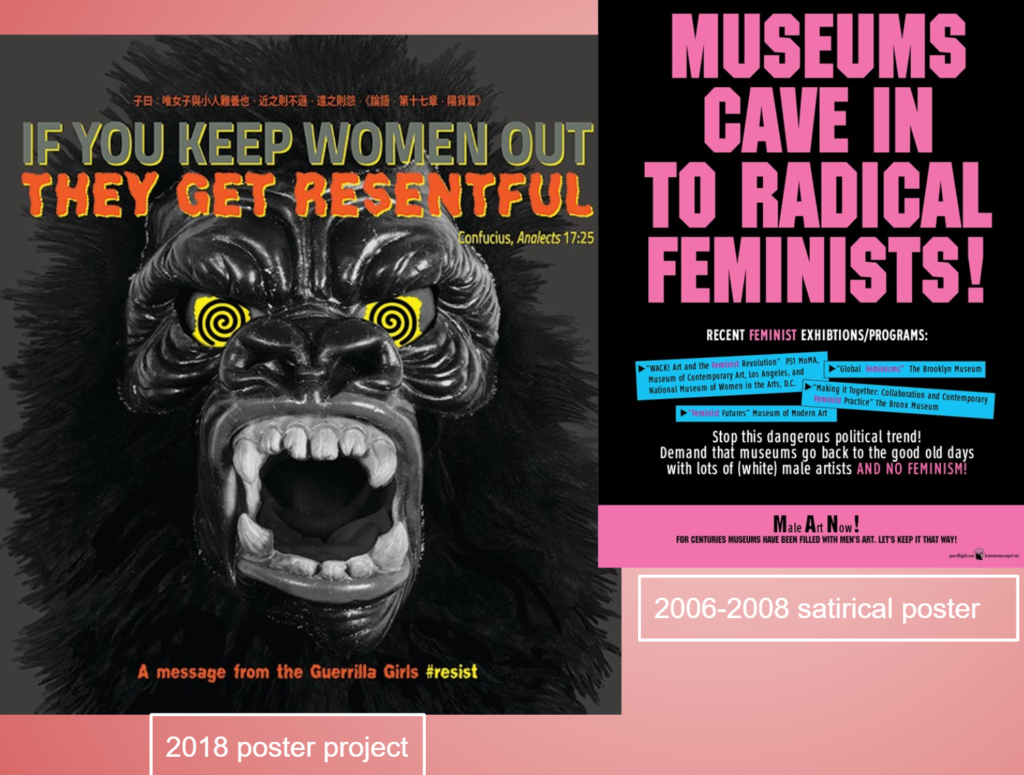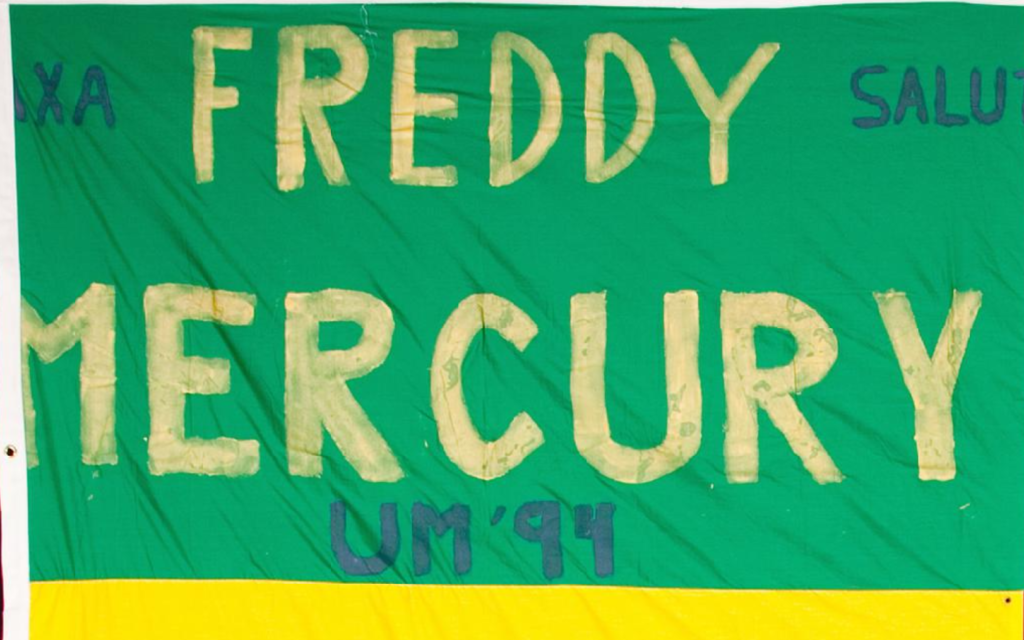Eliana Grajales
Women all around the world are told that modesty is everything, covering up is important or else you’re pretty much labelled a whore.. But why when a woman understands this sentiment and prances the streets covering herself with a monkey mask she’s “batshit crazy”? Oh! Excuse my language, I meant gorilla. The Guerrilla Girls is an organization of anonymous women donning gorilla masks while appearing publicly and one of their first battles in the art world was fighting the hypocrisy of men only letting women into museums when nude modelling. So much for modesty, am I right folks? They have been making posters to combat social issues specifically regarding artists since 1985 such as sexism and racism but some might say that their comedic approach may be too provocative.
Provocation has two highly known meanings; to be overly sexual or to be offensive. Both can be applied in this context but I believe that whatever women do and have done can and will be labelled as such in a overcritical way, therefore the Guerrilla Girls artistic medium will be stereotyped in that way regardless. Personally, I do agree that the Guerrilla Girls posters are provocative.. But is that a bad thing? The issues that they touch upon run deep and no changes will be made through making people “comfortable.” People need to be scared of these issues, appalled even, and that will not happen if this group isn’t bold or “offensive.”
The Guerrilla Girls most famous poster Do Women Have To Be Naked To Get Into The Met. Museum? was one piece of art to test social boundaries. On said poster there is a seemingly naked woman with her back to the viewer with a large gorilla mask bearing huge teeth. This piece of art was hung up all over the streets of New York city with the goal of appearing provocative to both grab people’s attention and address the issue that the Metropolitan Museum of Art had with barely letting female artists display their pieces inside. The majority of women got into the Met. by nude modelling for male painters and/or sculptors. Despite provocation working to the Guerilla Girls advantage on the streets The Public Art Fund had denied their poster to be made into billboards. In the end the Girls settled with buses as a chariot to spread their ideas.

Another poster that can be seen as provocative is LET’S TOAST IRISH ART, LADS! This one I found quite funny with how the feminist group points out the hypocrisy of toxic masculinity in Irish museums. The tone in which they use is snobbish when mocking the practices of catering to male artists and the satire is hard to miss. Now how is a poster of a brew next to a shot glass in any way provocative? It’s all in the wording for this poster! Especially the part where they refer to Ireland’s art academies as “seminal.”
The Guerrilla Girls ultimately used their comedy, offensiveness, boldness, and creativity to better their art. Their approach to addressing issues definitely reminded me of a feminist icon, Rosie the Riveter. We Can Do It! Was made initially to recruit women to work during World War II but the poster inevitably spiraled into much more. Rosie is now an inspiration to people like me and a representation of feminism in the early twentieth century. Although Rosie doesn’t address half of what the Guerrilla Girls do in their art, she does spread more awareness due to her popularity.
So that being said, if I want to go around New York city hanging up posters while posing as a weird mix between Marylyn Monroe and King Kong then I’ll do so, CHAD! Sometimes weirdness and vulgarity draws people’s attention to a cause and the Guerilla Girls do exactly that with both their looks and their art. Being provocative is what they do and have been doing for a long time and it sure is effective! If I saw a bright yellow banner in the middle of the sidewalk with a naked lady-gorilla hybrid I’d definitely do a double take, wouldn’t you?
Sources:
Britannica, The Editors of Encyclopedia. “Guerrilla Girls.” Encyclopedia Britannica, 4 Dec. 2018, https://www.britannica.com/topic/Guerrilla-Girls
Manchester, Elizabeth. “Do women have to be naked to get Into the Met. Museum?.” Guerilla Girls Talk Back art portfolio, 1989, https://www.metmuseum.org/art/collection/search/849438
J.Howard Miller, “We Can Do It,” poster, produced for Westinghouse/The War Production Coordinating Committee, 1942, National Archives, Powers of Persuasion https://americanhistory.si.edu/collections/search/object/nmah_538122


